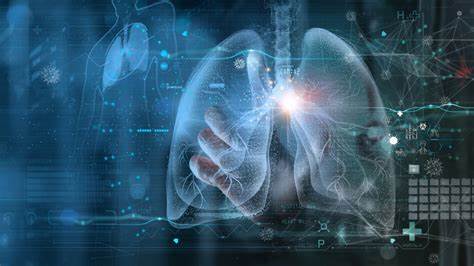Integration of Artificial Intelligence (AI) Into Medical Imaging.
1. Formal/Academic Tone
Introduction
The integration of artificial intelligence (AI) into medical imaging has marked a pivotal transformation in healthcare, fostering advancements that enhance diagnostic accuracy, efficiency, and overall patient care. As AI-driven technologies continue to evolve, their impact on medical imaging has become increasingly profound, enabling clinicians to interpret complex visual data with unprecedented precision. This literature review examines recent innovations and applications of AI in medical imaging, underscoring its role in reshaping contemporary healthcare practices.
Innovations in AI and Medical Imaging
Recent advancements in AI have led to the development of sophisticated computational models that enhance medical image analysis. Among these, deep learning algorithms, convolutional neural networks (CNNs), and generative adversarial networks (GANs) have been particularly instrumental.
- Deep Learning Algorithms: These models analyze vast amounts of medical imaging data, identifying patterns that may not be discernible to the human eye. Such capabilities have significantly improved diagnostic accuracy, particularly in the early detection of diseases.
- Convolutional Neural Networks (CNNs): CNNs specialize in processing visual data, making them highly effective in recognizing anomalies within medical images. Their ability to distinguish between normal and abnormal tissue structures has been critical in fields such as radiology and pathology.
- Generative Adversarial Networks (GANs): GANs have facilitated image enhancement, reconstruction, and augmentation, ensuring that medical professionals have access to high-quality imaging even in cases where initial scans are suboptimal.
Applications of AI in Medical Imaging
The adoption of AI-driven imaging solutions extends across multiple medical disciplines, each benefiting from enhanced diagnostic capabilities:
- Radiology: AI assists radiologists in detecting tumors, fractures, and other abnormalities, reducing diagnostic errors and expediting image interpretation.
- Pathology: AI-driven image analysis aids in the identification of cancerous cells in biopsy samples, streamlining the pathology workflow and increasing diagnostic precision.
- Cardiology: AI facilitates the early detection of cardiovascular conditions through automated image segmentation and analysis, aiding in the timely intervention of diseases such as coronary artery disease.
- Ophthalmology: AI is instrumental in detecting diabetic retinopathy and other retinal disorders by analyzing high-resolution fundus images, enabling early-stage diagnosis.
Impact on Patient Care
AI’s role in medical imaging extends beyond diagnostics; it contributes to personalized treatment planning, ensuring that interventions are tailored to individual patient needs. Additionally, AI-driven automation reduces the workload of healthcare professionals, allowing them to focus on complex decision-making and patient interactions.
Conclusion
The integration of AI into medical imaging represents a paradigm shift in healthcare. By leveraging advanced machine learning techniques and practical applications, AI continues to refine diagnostic accuracy and enhance patient outcomes. As AI technologies progress, they will inevitably play an even more integral role in shaping the future of medical imaging and, by extension, modern medicine.
2. Conversational/Engaging Tone
Introduction: AI in Medical Imaging—A Game Changer in Healthcare
Imagine a world where a machine can detect diseases in a split second, helping doctors make life-saving decisions faster than ever before. That world is already here, thanks to artificial intelligence (AI). AI has completely transformed medical imaging, making it more accurate, efficient, and accessible. From detecting cancerous tumors in radiology scans to identifying early signs of blindness in eye diseases, AI is revolutionizing the way we diagnose and treat patients. In this article, we’ll explore the latest innovations in AI-driven medical imaging and how these advancements are reshaping healthcare as we know it.
The Cutting-Edge Tech Behind AI in Medical Imaging
AI isn’t just a buzzword—it’s a powerhouse of technology that enhances the way we analyze medical images. Here are some of the most exciting AI-driven innovations:
- Deep Learning Algorithms: These algorithms learn from thousands of medical images to detect patterns that even expert doctors might miss. The result? Faster and more reliable diagnoses.
- Convolutional Neural Networks (CNNs): CNNs specialize in image processing and help detect abnormalities in X-rays, MRIs, and CT scans. They’re like highly trained assistants that never get tired.
- Generative Adversarial Networks (GANs): GANs help improve image quality and generate realistic scans, even when the original images are blurry or incomplete. This means better visuals for doctors and more accurate diagnoses.
AI in Action: Where It’s Making the Biggest Impact
AI is now an essential tool in several medical fields. Let’s take a look at where it’s making the biggest difference:
- Radiology: AI-powered tools can highlight suspicious areas in scans, helping radiologists catch issues like tumors or fractures earlier.
- Pathology: AI speeds up the process of analyzing tissue samples, making it easier to diagnose diseases like cancer with greater precision.
- Cardiology: AI assists in detecting heart conditions by analyzing images of blood vessels and heart structures. Early detection means better chances of preventing heart attacks or strokes.
- Ophthalmology: AI is being used to detect diseases like diabetic retinopathy, helping patients get treated before they suffer vision loss.
How AI is Improving Patient Care
One of the most exciting aspects of AI in medical imaging is its impact on patient care. By reducing the time it takes to analyze scans, doctors can diagnose diseases earlier and start treatment sooner. AI also helps create personalized treatment plans, ensuring that patients receive care tailored to their specific needs.
Looking Ahead: The Future of AI in Medical Imaging
AI isn’t replacing doctors; it’s empowering them. As technology continues to evolve, AI will become even better at diagnosing diseases, predicting outcomes, and improving healthcare efficiency. With these advancements, we’re heading toward a future where AI-driven medical imaging helps save even more lives.
3. Futuristic/Visionary Tone
Introduction: AI—The Future of Medical Imaging is Now
Picture a world where a patient walks into a clinic, steps in front of a scanner, and within seconds, an AI-powered system analyzes their medical images, detecting diseases with near-perfect accuracy. This isn’t science fiction—it’s the reality we are rapidly approaching. AI has ushered in a new era of medical imaging, transforming the way we diagnose and treat illnesses. With cutting-edge technologies like deep learning, neural networks, and advanced image processing, AI is pushing the boundaries of what’s possible in healthcare.
The Evolution of AI in Medical Imaging
Medical imaging has always been a cornerstone of modern medicine, but traditional methods have limitations. Enter AI—an intelligent assistant that not only enhances image quality but also uncovers hidden patterns in scans that the human eye might miss. Let’s explore the key advancements that are redefining medical imaging:
- Self-Learning Algorithms: These intelligent systems continue to improve as they process more data, making diagnoses more accurate over time.
- Hyper-Precision Diagnostics: AI can identify diseases at their earliest stages, often before symptoms appear. This means patients receive treatment sooner, potentially saving lives.
- Automated Image Enhancement: AI can reconstruct blurry or low-resolution images into crisp, detailed visuals, giving doctors clearer insights for decision-making.
A Glimpse into AI-Powered Healthcare
AI is already making a dramatic impact in various medical fields:
- Smart Radiology: AI scans and highlights critical abnormalities in X-rays, CT scans, and MRIs, reducing the burden on radiologists and minimizing diagnostic errors.
- AI-Assisted Surgery: AI-driven imaging helps guide surgeons with unparalleled accuracy, reducing risks and improving surgical outcomes.
- Predictive Healthcare: AI is being used to predict disease progression by analyzing trends in medical imaging, paving the way for proactive treatments.
The Future is Bright: What’s Next for AI in Healthcare?
We are only scratching the surface of AI’s potential in medical imaging. As AI continues to evolve, we may soon see real-time diagnostics, fully automated radiology departments, and AI-driven treatment recommendations tailored to each patient’s unique genetic profile. The fusion of AI and medical imaging is more than an advancement—it’s a revolution that promises to redefine healthcare for generations to come.




